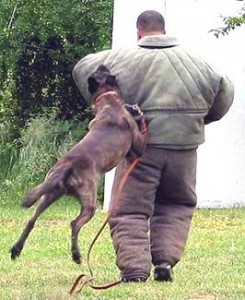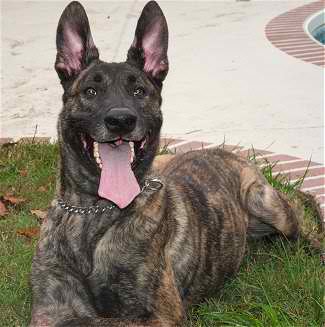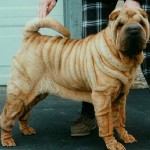Knowing Dutch Shepherd Better
Country of origin
The Dutch Shepherd is believed to have developed in the Netherlands and is very similar to Belgian Shepherds. The only differences between the two breeds are in size and coat color. Dutch shepherds were originally bred to herd and protect sheep and cattle. They also served as guard dogs that alerted their owners of the presence of strangers on their land. Nowadays, aside from farm work, they have been discovered to be very efficient in police work, just like their Belgian relatives.
Size
These medium sized dogs usually grow from 21 to 25 inches, and are 23 to 30 kilograms in weight. They have flat foreheads, broad chests, dark eyes, high ears, long muzzles with strong jaws, muscular bodies, and brindle coats.
Coat
This powerful dog sports a double-coat, with the overcoat being quite rough, and the undercoat wooly and soft. The Dutch Shepherd has three types of coats: short, long and wire. With any kind of coat, the Dutch shepherd is always brindle-colored, either gold, gray, silver, blue or salt and pepper.
Character
This versatile breed is very intelligent, high energy, loyal, independent, and is very eager to please, which makes it a very competent working dog and is quite easy to train with the right kind of method (reward-based) and a strong handler.
Temperament
Dutch Shepherds are a jack of all trades, and are quite friendly as long as they undergo proper socialization as a puppy. They are loyal to their families and have an instinct to protect their owners and their property. They need owners who know how to be firm pack leaders that know how to handle their dogs with assertiveness but not with a heavy hand. They can be very good with children as long as they are properly introduced, and as long as the children are taught how to respect dogs’ boundaries and are shown how to interact with dogs.
Care
With all the types of coat of this breed except the wire-haired type, regular grooming and brushing is recommended in order to prevent excessive shedding. They can live in apartments but would prefer a home where they have space to run. Obedience training is a must, i you want a calm, balanced dog.
Training
 These high energy dogs need plenty of activities in order to be challenged both physically and mentally, as this breed can be very destructive when left to its own devices without ample exercise or training. Frustration due to boredom can also cause the Dutch Shepherd to develop issues like excessive barking, nipping at heels, and even aggression. They would respond well to positive reinforcement training that is consistent and purposeful.
These high energy dogs need plenty of activities in order to be challenged both physically and mentally, as this breed can be very destructive when left to its own devices without ample exercise or training. Frustration due to boredom can also cause the Dutch Shepherd to develop issues like excessive barking, nipping at heels, and even aggression. They would respond well to positive reinforcement training that is consistent and purposeful.
Activity
The Dutch Shepherd is an active dog that will truly enjoy an active lifestyle. Daily walks or runs are very important in order for them to stay calm inside the house, and they are very much capable of competing in dog sports such as dog agility, fly ball and Frisbee. In addition to herding, they would also do well in obedience trials, Schutzhund, protection training, and police work.



